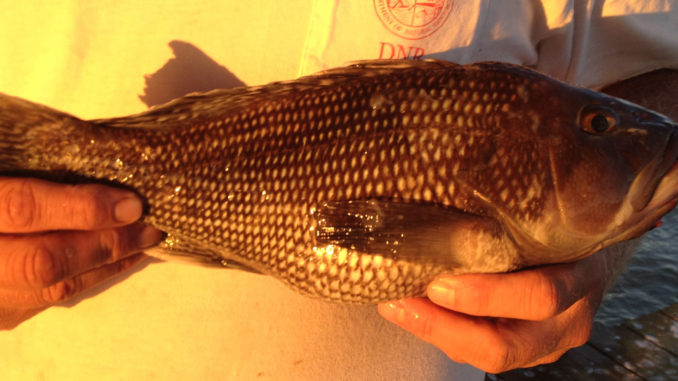
Fishermen question data, federal remedies
On Oct. 17, the South Atlantic Fisheries Management Council closed the season on black sea bass because the annual recreational catch limit had been met, striking a blow to an already hard-hit bottom-fishing industry.
In recent years, it has become increasingly difficult for guides and recreational anglers to have a productive day bottom-fishing off of our coast.
Red snapper, once a big draw for offshore bottom-fisherman, have become almost a nuisance since their harvest has been made illegal. Fortunately, black sea bass, while much smaller than red snapper, were still available and in great numbers — at least until the closure.
The Coastal Conservation Association-SC has been quick to react to the closure, and CCA’s David Cupka has sent a letter to the SAFMC, asking them to take some common-sense steps to remedy a plan to rebuild black sea bass stocks that he feels is unnecessarily restrictive, not to mention hurting the chartering business.
“I think it is hurting a lot of charter captains, especially those who target nearshore wrecks and reefs,” said Capt. Ross Holmquist of No Worries Charters in Beaufort.
According to Holmquist, many of his clients prefer a 6-hour charter, which isn’t enough time to go far enough offshore to target pelagic species like wahoo, so bottom-fishing is the most obvious choice. While black sea bass are an important and sought-after bottom species, other options are still available. This winter, Holmquist plans on targeting grouper while the season is still open, triggerfish, and then sheepshead later in the season.
“Hopefully, people will remain interested in what can be caught and not so much on what can’t — or many guides may have to get another job,” he said.
Providing bait, tackle and supplies to both recreational anglers and charter captains, many businesses are also affected by the closure. Charter captains not only rent boat slips from marinas but they also attract clients who spend money at the marinas as well.
“Fortunately, most of our business comes from the inshore crowd, but it can still have an effect on some of our business because we offer offshore tackle as well, and if people stop going offshore than they want need it,” said Mike Carli at Beaufort Boat and Dock Supply.
What angers most anglers is the lack of evidence that the black sea bass population is anything but extremely healthy — much like the off-limit population of red snapper. According to the SAFMC, black sea bass are overfished, their population is too small and their rate of removal is too high. That led, in 2006, to an annual recreational quota for black sea bass that allows no more than 409,000 pounds harvested annually through 2016. Because the quota was exceeded by an estimated 67,263 pounds last year, the quota was reduced to 341,747 pounds, a number that was quickly met only a few months after the season opened in June.
CCA said the program has worked well, and black sea bass stocks are rebuilding quickly, so naturally anglers are reaching their catch limits more easily.
“If anything, there are more black sea bass now than at any time since I started fishing,” Holmquist said. “At times, they are so thick they are all you can catch, and that’s at a non-stop pace.”
CCA called for a 3-part remedy for the black sea bass closure:
• Switch the rebuilding to allow for greater recreational quotas while still achieving the 2016 rebuilding deadline;
• Add any harvest increases allowed by the benchmark stock assessment as soon as possible;
• Incorporate independent data to fully corroborate the stock status.
“It is unconscionable that we are still managing high-value recreational fisheries without the independent data necessary to corroborate the catch data,” said Bill Bird, chairman of the CCA’s South Atlantic Fisheries committee. “We would urge that the Council demand the resources necessary to incorporate independent data to establish the greatest level of confidence in future stock assessments.”
Any chance of the SAFMC using a common-sense or even a sound scientific approach to fisheries management seems to be slight. This closure is just another example of the voices of recreational anglers being ignored in spite of facts supporting their arguments.





Be the first to comment